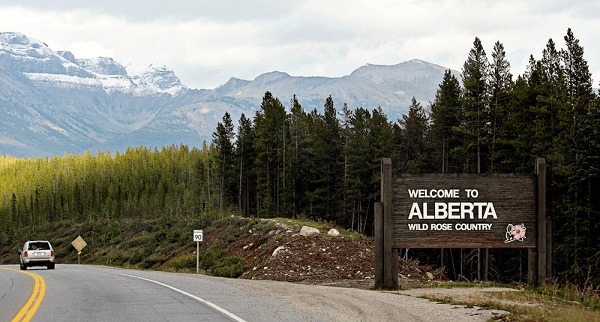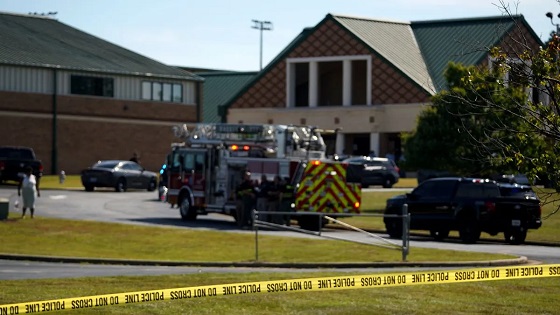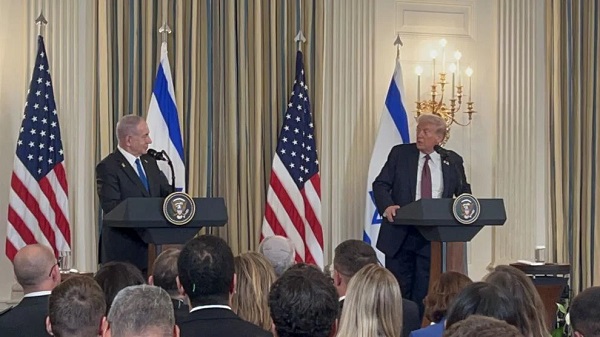Frontier Centre for Public Policy
UNDRIP’s false promise of Indigenous Nationhood threatens individual Indigenous Canadians
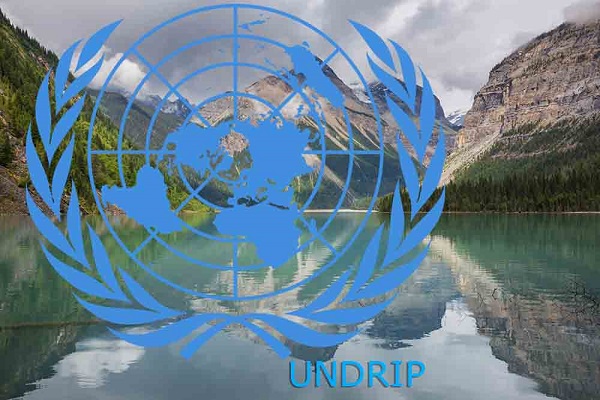
From the Frontier Centre for Public Policy
By Peter Best
All societies need to make use of force, both to preserve internal order and to protect themselves from external enemies. A liberal society does this by creating a powerful state, but then constraining that power under a rule of law. The state’s power is based on a social contract between autonomous individuals who agree to give up their rights to do as they please in return for the state’s protection. It is legitimated both by the common acceptance of the law, and, if it is a liberal democracy, through popular elections. Liberal rights are meaningless if they cannot be enforced by a state, which, by Max Weber’s famous definition, is a legitimate monopoly of force over a defined territory…Ultimate power, in other words, continues to be the province of national states, which means that control of this power at this level remains critical.
-Francis Fukuyama – Liberalism and its Discontents
Our Canadian elites, led by Justin Trudeau’s Liberal government, continue to advance the idea that Canada should be a race-based nation. This is reflected in the Trudeau government’s enactment of the racist United Nations Declaration on the Rights of Indigenous People (UNDRIP) laws and policies. (The UNDRIP Action Plan.)
These laws and policies are partly based on the premise that Indigenous peoples in Canada still have distinct cultures that give them the right to exist as separate groups within the Canadian nation, living parallel to the rest of Canadians, and only optionally being subject to the laws of Canada.
Under the heading “Cultural, religious and linguistic rights,” the UNDRIP Action Plan sets out the Trudeau government’s goal of creating a country where:
Indigenous peoples fully enjoy and exercise their distinct rights to maintain, control, develop, protect, and transmit their cultural heritage, indigenous knowledge, languages, food systems, sciences, and technologies, without discrimination…. Indigenous peoples are thriving, including through connection to culture and community, the use of their languages and the expression of their spiritual heritage.
Also, the UNDRIP Action Plan prescribes that these “distinct rights” are to be exercised and enhanced by treating “Indigenous peoples” as independent, self governing, “nations,” representing over 630 race-based nations existing within the boundaries of Canada.
The premise underlying the UNDRIP Action Plan is that authentic, pre-contact Indigenous cultures still exist, and that they have the right to be preserved at the expense of Canadian taxpayers. In other words, these nations will be dependent on other Canadians.
The last vestiges of authentic, distinct, pre-contact Indigenous cultures disappeared about 150 years ago. As Assembly of First Nations co-founder William Wuttunee wrote in 1971 in his book Ruffled Feathers: “Real Indian culture is just about dead on the reserves.” Now, over 50 years later, native traditional cultures have been replaced by re-imagined cultures, even if a declining few Indigenous people still speak their traditional languages.
There can be no going back to any part of Indigenous pre-contact cultures, nor would Indigenous peoples want to. In this respect, Iroquois writer Sachem Ely S. Parker says:
Do you know or can you believe that sometimes the idea obtrudes…whether it has been well that I have sought civilization with its bothersome concomitants and whether it would not be better even now…to return to the darkness and most sacred wilds (if any such can be found) of our country and there to vegetate and expire silently, happily and forgotten as do the birds of the air and the beasts of the field. The thought is a happy one but perhaps impracticable.
When trade with Europeans began in the early 1600’s, Indigenous peoples began the long, irreversible process of appropriating European goods and technologies, modern economic practices, Christianity, and Western norms and values, with the consequence that, by the late 19th century, their paleolithic, pre-contact cultures had become almost extinct.
All that remained was what William Wuttunee described as “touristy” and “museum pieces of buckskin and feathers,” the ceremonial remnants justly celebrated on special occasions but, less innocently, now used by their current leaders as symbolism in their endless political campaigns for more money and power.
Indigenous peoples cannot turn back from the modern, high-tech, globalist culture that is systematically enveloping all Canadians. In this respect, Yuval Noah Harari wrote in Sapiens:
Today almost all humans share the same geopolitical system (the entire planet is divided into internationally recognized states); the same economic system (capitalist market forces shape even the remotest corners of the globe); the same legal system (human rights and international law are valid everywhere, at least theoretically); and the same scientific system (experts in Iran, Israel, Australia, and Argentina have exactly the same views about the structure of atoms or the treatment of tuberculosis…. We still talk a lot about “authentic” cultures, but if by “authentic” we mean something that developed independently, and that consists of ancient local traditions free of external influences, then there are no authentic cultures left on earth. Over the last few centuries, all cultures were changed almost beyond recognition by a flood of global influences.
But ironically, the rise of globalism has counterintuitively led to the increase of parochial, tribalist feelings.
Historian Robert Kaplan, in his latest book The Loom of Time – Between Empire and Anarchy, From the Mediterranean to China, argues that the cultural shock caused by modernism and globalism–by their annihilation of traditional tribal life–has resulted in an emotionally compensating reaction on the part of those affected to “reinvent their primordial selves in more abstract and extreme forms in order to cope with impersonal settings,” and, in addition, to achieve worldly gains.
Kaplan explains that the anonymity and the loss of pride and identity on the part of tribal societies resulting from urbanization and other globalist influences led to the psychological need for a compensating, “emotional grounding,” which now manifests itself in intense, albeit fictional, assertions of political, ethnic, religious, and racial exceptionalism, and opportunistic demands for favored treatment by the state.
Ironically, the more modern, urban, and globally integrated the former pre-contact tribe becomes, the greater its “primordial” racial sentiments become and the greater and more inherently baseless are its ethnic or race-based claims to be favored by the state.
Pre-contact tribal cultures were relatively static and fatalistic. There was little belief in “progress,” human rights, money, wealth, or job creation. There was no belief that people had a right to material things like housing, education, medical care, constitutions, courts, judges, welfare, policing, or clean water. These are all modern Western ideas and practices that were inconceivable to pre-contact tribal cultures.
Kaplan writes:
Cultural consciousness is enhanced rather than submerged by modernization, because of the ability of modern states and societies to offer jobs, status, and other spoils for which individuals of different ethnic, religious and sectarian identities compete. Through education, modernization also makes people more aware of their collective pasts and their differences with other peoples. Such phenomena have been the forerunners to the identity politics of the post-modern era.
This is what has happened to Canadian Indigenous tribes.
Modernity, urbanization, and globalism, as William Wuttunee confirmed, have destroyed their pre-contact cultures and, as an ironic consequence, have led to abstract and entirely fantasy-based claims of present Indigenous cultural authenticity and “difference.” The more obvious it is that authentic pre-contact Indigenous cultures have vanished, the more their current Indigenous leaders opportunistically claim that they are alive and thriving.
The unprecedented, radical Indigenous political and legal demands now being routinely made by Indigenous groups are, in ironic fact, completely rooted in Western political ideas and practices.
Their demands for quasi- separatist “nation-to-nation” status, for veto powers over federal and provincial laws possibly affecting their “aboriginal rights and territories,” for reparations, for ownership stakes in resource projects and for co-management with the Crown of public lands and natural resources, are all demands that would be inconceivable to pre-contact Indigenous tribal cultures.
The Western philosophical nature of these demands is proof positive of the extinguishment of pre-contact Indigenous cultures.
Canadian Indigenous groups cannot form viable nation-states, and the UNDRIP Action Plan’s attempts to do this impossible task threatens the civic well being of individual Indigenous Canadians.
In referring to the endless squabbling between the various ethnic tribes that make up the many failed states of the Middle East and Africa, Kaplan reminds us that legitimate nation-states are more than artificial communities created by politics, as were the First Nations reserves in Canada. Rather, they are natural, “practical communities…entities of geographic and historical association.”
Kaplan also says that legitimate nation-states have hierarchical, coherent governing structures, and rules-based laws developed organically over time. They are supported by “organized bureaucratic systems interacting with each other on an impersonal, secular basis.”
None of these basic requirements of nationhood are present to any sufficient degree on First Nations reserves, which, as organized groups, are mostly strangers to the civic values, practices, and traditions of modern liberal democracies.
First Nations reserves, like the “institutionally flimsy” Arab and African tribal groups referred to by Kaplan, “have imported the fruits of science without as societies ever producing them themselves… They have experienced the West only as “things.” … They have possessed the techniques of Europe without intuiting the centuries-long cultural processes that had made the West what it was…”.
In other words, Indigenous tribal groups are “modern” only in the culturally appropriated material sense, and because of the Indian Act and the reserve system, they tend to be illiberal in their political culture and governing practices. The proposed Indigenous nation-states that are envisioned by the UNDRIP Action Plan will be, in Kaplan’s words, just as institutionally-flimsy as other failed states are.
This reality is at the core of the threat posed by the UNDRIP Action Plan to the civic well-being of individual Indigenous Canadians. In this regard Kaplan reminds us that: “…where institutions are weak then personalities…who milk and misgovern…perforce dominate.”
On Canadian Indigenous reserves, governance is prone to family-based self-dealing. (Kaplan’s phrase is “republics of cousins.”) There is no reason to believe that such governments will be better under the UNDRIP Action Plan. In fact, governance will probably get worse because, as Kaplan shows, tribalism and illiberalism are worsened when politically unprepared people achieve self-rule.
Indigenous lawyer and businessman, Calvin Helin, in his seminal book Dances With Dependency: Out of Poverty Through Self- Reliance, compares illiberal First Nations reserve governance to “banana republics.” He referred to Chiefs and Band Councils as “colonizers of their own disempowered people.”
Indigenous scholar Rob Louis adds:
What realistic chance do band members have against chief and council who control their money and resources? For many band members in Canada, the battle is not just with the Crown, it is also with their own leadership… Perhaps reconciliation within Indigenous communities needs to take place before reconciliation can happen with Canada.
Until recently, vulnerable, and powerless Indigenous Canadians had the federal and provincial governments, the courts, and human rights commissions to protect them. But that is no longer true. All these state institutions have shamefully abandoned their role of protectors of weak and vulnerable Indigenous Canadians.
The Supreme Court of Canada is just as much of a threat to the civic well-being of Indigenous Canadians as is the UNDRIP Action Plan.
In its Vuntut Gwitchin decision, purportedly to preserve Indigenous “difference,” the Court ruled that in the event of an irreconcilable conflict, a First Nations Band’s “collective rights,” resting on its right to protect “Indigenous difference,” will now prevail over an individual Indigenous Canadian’s rights as guaranteed by the Canadian Charter of Rights and Freedoms. As such, the Charter can now be effectively ignored by Band Councils, depriving countless Indigenous Canadians of Charter protection on their home reserves and territories.
The Vuntut Gwitchin First Nation (VGFN) is described by the Supreme Court as a “self-governing nation” in the Yukon comprising of about 560 “citizens,” only about 260 of whom live in the “main community” of Old Crow, which is the so-called “seat of government.” The other 300 odd “citizens” live mostly in Whitehorse, 800 kilometres south. There are no roads into Old Crow. Students cannot graduate from high school in that community, and there no adequate medical facilities in Old Crow.
Cindy Dickson, a VGFN citizen living in Whitehorse, claimed that a VGFN law that said that a “citizen” had to live in Old Crow to qualify to run for VGFN Council violated her Canadian Charter rights not to be discriminated against based on her residency.
She lost her case.
The Supreme Court asserted the existence of “Indigenous legal orders” that prevailed over Canadian law. There was an anti-discrimination provision in the 1993 VGFN Constitution. The Court told her to rely on that and “pursue a similar claim under the VGFN Constitution.”
The problem with this is that there is no VGFN court and no VGFN judge or lawyers. In fact, there is no VGFN institutional justice system whatsoever through which Cindy Dickson could pursue her claim. How could there be? VGFN, like most First Nations, is a mere tribal village, with a population so tiny that the creation of any such state institutions is impossible.
The Supreme Court knew this, and, to its discredit, preferred giving Ms. Dickson empty words over telling her the harsh truth that while she may have rights in the abstract, in VGFN because of its lack of institutions, she could not pursue those rights. A right without institutional support is, in fact, no right at all.
Another harsh truth that the Court avoided telling Ms. Dickson is that now, VGFN, like all Canadian First Nations, have been shamefully declared Charter-free zones by the Supreme Court of Canada. The Vuntut Gwitchin decision, along with the UNDRIP Action Plan, means that victims of corrupt or discriminatory First Nations reserve leadership practices will now have no one to turn to for protection and relief.
In fact, the Vuntut Gwitchin decision illustrates the absurdity of the Indigenous nation-state pretensions of the Canadian UNDRIP Action Plan.
The joint efforts of the Supreme Court and the federal government’s UNDRIP Action Plan have made individual Indigenous Canadians, in terms of having the guaranteed protection of the rule of law, effectively unprotected on their new, UNDRIP “nation-state” reserves.
Robert Kaplan writes a great deal about the multi-ethnic, multi-racial empires, the most generic form of governance in world history, where the strong hand of the emperor kept order and protected vulnerable minorities from the depredations of majorities. He cites the example of the Ottoman empire, where, with its breakup, the strong power of the sovereign in those territories was lost. Power was then transferred to tribalistic ethnic and religious groups that have little regard for the rights of minorities. This has resulted in over a century of anarchic tribal, ethnic and religious persecution and warfare in the Middle East.
Since Confederation, Canada has protected powerless and vulnerable Indigenous people from the mainly illiberal governance systems that are typical of First Nations reserves. Now, the Canadian state is abandoning this protective role. By doing so Canada is betraying the vast majority of powerless and vulnerable Indigenous Canadians, leaving them defenceless against the power and potential injustice of their tribal leaders.
What has happened echoes Frances Fukuyama’s warning that rights are meaningless unless they are created and can be enforced by a powerful state. The UNDRIP Action Plan and the Supreme Court’s rulings like Vuntut Gwitchin will not create viable and strong Indigenous nation-states. All they will do is weaken the Canadian state, causing harm to all Canadians and depriving the vast majority of vulnerable, powerless Indigenous Canadians of the protective rule of Canadian law.
Peter Best is a retired Sudbury lawyer. He is the author of There Is No Difference – An Argument for the Abolition of the Indian Reserve System and Special Race-based Laws and Entitlements for Canada’s Indians.
Business
Major Projects Office Another Case Of Liberal Political Theatre
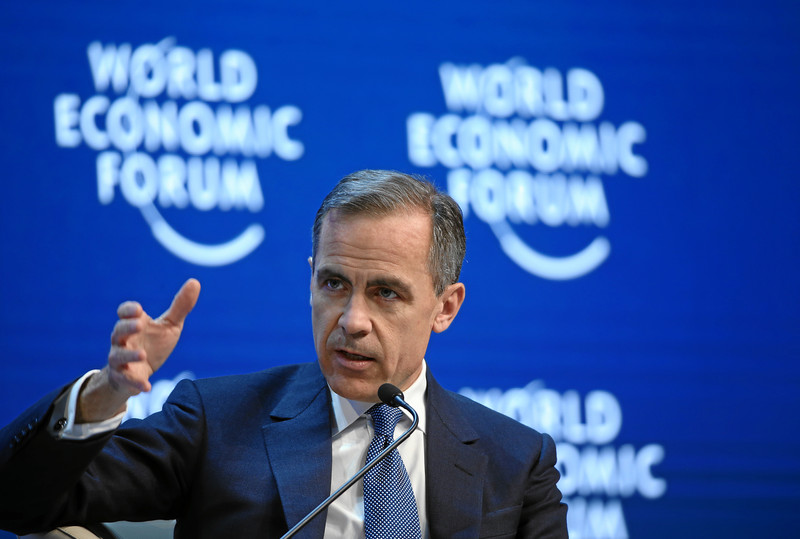
From the Frontier Centre for Public Policy
By Lee Harding
Ottawa’s Major Projects Office is a fix for a mess the Liberals created—where approval now hinges on politics, not merit.
They are repeating their same old tricks, dressing up political favouritism as progress instead of cutting barriers for everyone
On Sept. 11, the Prime Minister’s Office announced five projects being examined by its Major Projects Office, all with the potential to be fast-tracked for approval and to get financial help. However, no one should get too excited. This is only a bad effort at fixing what government wrecked.
During the Trudeau years, and since, the Liberals have created a regulatory environment so daunting that companies need a trump card to get anything done. That’s why the Major Projects Office (MPO) exists.
“The MPO will work to fast-track nation-building projects by streamlining regulatory assessment and approvals and helping to structure financing, in close partnership with provinces, territories, Indigenous Peoples and private investors,” explains a government press release.
Canadians must not be fooled. A better solution would be to create a regulatory and tax environment where these projects can meet market demand through private investment. We don’t have that in Canada, which is why money has fled the country and our GDP growth per capita is near zero.
Instead of this less politicized and more even-handed approach, the Liberals have found a way to make their cabinet the only gatekeepers able to usher someone past the impossible process they created. Then, having done so, they can brag about what “they” got done.
The Fraser Institute has called out this system for its potential to incentivize bribes and kickbacks. The Liberals have such a track record of handing out projects and even judicial positions to their friends that such scenarios become easier to believe. Innumerable business groups will be kissing up to the Liberals just to get anything major done.
The government has created the need for more of itself, and it is following up in every way it can. Already, the federal government has set up offices across Canada for people to apply for such projects. Really? Anyone with enough dollars to pursue a major project can fly to Ottawa to make their pitch.
No, this is as much about the show as it is about results—and probably much more. It is all too reminiscent of another big-sounding, mostly ineffective program the Liberal government rolled out in 2017. They announced a $950-million Innovation Superclusters Initiative “designed to help strengthen Canada’s most promising clusters … while positioning Canadian firms for global leadership.”
That program allowed any company in the world to participate, with winners getting matching dollars from taxpayers for their proposals. (But all for the good of Canada, we were told.) More than 50 applications were made for these sweepstakes, which included more than 1,000 businesses and 350 other participants. In Trudeau Liberal fashion, every applicant had to articulate how their proposal would increase female jobs and leadership and encourage diversity in the long term.
The entire process was like one big Dragon’s Den series. The Liberals trotted out a list of contestants full of nice-sounding possibilities, with maximum hype and minimal reality. Late in the process, Minister of Innovation, Science and Industry Navdeep Bains picked the nine finalists himself (all based in cities with a Liberal MP), from which five would be chosen.
The alleged premise was to leverage local and regional commercial clusters, but that soon proved ridiculous. The “Clean, Low-energy, Effective and Remediated Supercluster” purported to power clean growth in mining in Ontario, Quebec and Vancouver. Not to be outdone, the “Mobility Systems and Technologies for the 21st Century Supercluster” included all three of these locations, plus Atlantic Canada. They were only clustered by their tendency to vote Liberal.
Today, the MPO repeats this virtue-signalling, politicking, drawn-out, tax-dollar-spending drama. The Red Chris Mine expansion in northwest British Columbia is one of the proposals under consideration. It would be done in conjunction with the Indigenous Tahltan Nation and is supposed to reduce greenhouse gas emissions by 70 per cent. That’s right up the Liberal alley.
Meanwhile, the project is somehow part of a proposed Northwest Critical Conservation Corridor that would cordon off an area the size of Greece from development. Is this economic growth or economic prohibition? This approach is more like the United Nations’ Agenda 2030 than it is nation-building. And it is more like the World Economic Forum’s “stakeholder capitalism” approach than it is free enterprise.
At least there are two gems among the five proposals. One is to expand capacity at the Port of Montreal, and another is to expand the Canada LNG facility in Kitimat, B.C. Both have a market case and clear economic benefits.
Even here, Canadians must ask themselves, why must the government use a bulldozer to get past the red tape it created? Why not cut the tape for everyone? The Liberals deserve little credit for knocking down a door they barred themselves.
Lee Harding is a research fellow for the Frontier Centre for Public Policy.
Business
Finance Committee Recommendation To Revoke Charitable Status For Religion Short Sighted And Destructive
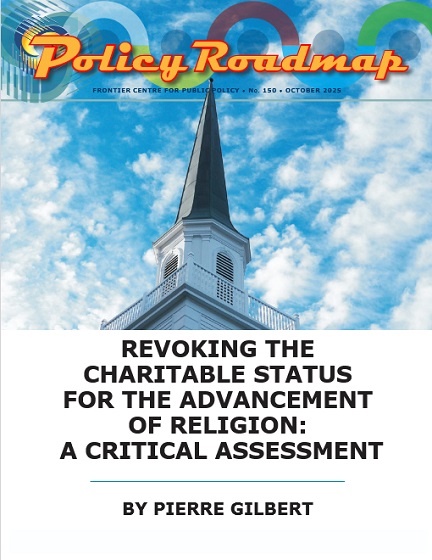
From the Frontier Centre for Public Policy
A new report from the Frontier Centre for Public Policy warns that proposed changes to Canada’s Income Tax Act could have devastating consequences for churches and faith-based organizations nationwide.
Revoking the Charitable Status for the Advancement of Religion: A Critical Assessment, by senior fellow Pierre Gilbert, responds to the 2025 Standing Committee on Finance’s recommendation to remove “advancement of religion” as a recognized charitable purpose.
If adopted, the measure could strip churches, mosques, synagogues, temples and religious charities of their charitable status. The impact would include the loss of income tax exemptions and the inability to issue charitable tax receipts. They could also face a one-time penalty tax that effectively wipes out most of what they own.
“The committee’s recommendation, driven by lobbying from the BC Humanist Association, represents a direct threat to religious freedom and the vital role faith communities play in Canadian society,” said Gilbert. “Religious organizations contribute an estimated $16.5 billion annually to Canada through social services, education, community programs and cultural preservation. Revoking their charitable status would be both fiscally shortsighted and socially destructive.”
The report traces the origins of charitable status in English common law, examines the rise of secularism and fiscal pressures driving the proposed change, and calls on churches to proactively respond through education, advocacy and reasserting their public mission.
Download full PDF here. (30 pages)
-
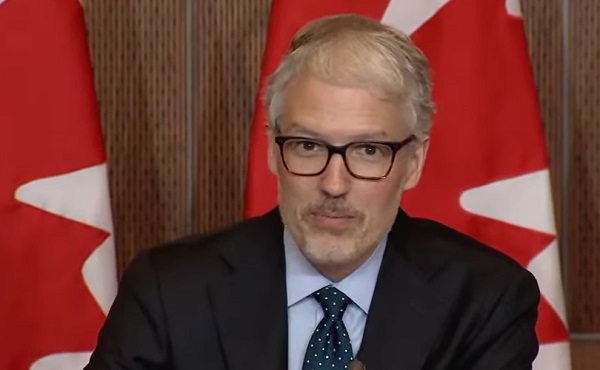
 Censorship Industrial Complex2 days ago
Censorship Industrial Complex2 days agoCanada’s privacy commissioner says he was not consulted on bill to ban dissidents from internet
-

 Business2 days ago
Business2 days agoFormer Trump Advisor Says US Must Stop UN ‘Net Zero’ Climate Tax On American Ships
-

 Alberta2 days ago
Alberta2 days agoEnbridge CEO says ‘there’s a good reason’ for Alberta to champion new oil pipeline
-
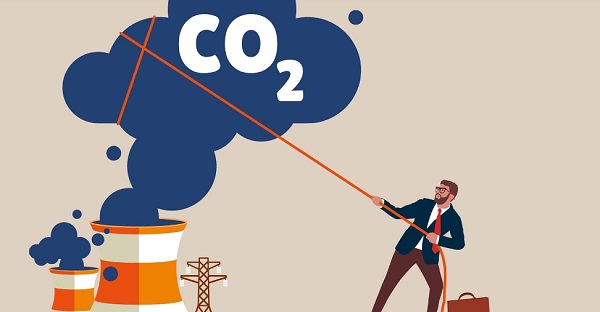
 Alberta2 days ago
Alberta2 days agoThe Technical Pitfalls and Political Perils of “Decarbonized” Oil
-

 National1 day ago
National1 day agoDemocracy Watch Renews Push for Independent Prosecutor in SNC-Lavalin Case
-

 Bruce Dowbiggin2 days ago
Bruce Dowbiggin2 days agoLong-Distance Field Goals Have Flipped The Field. Will The NFL Panic?
-
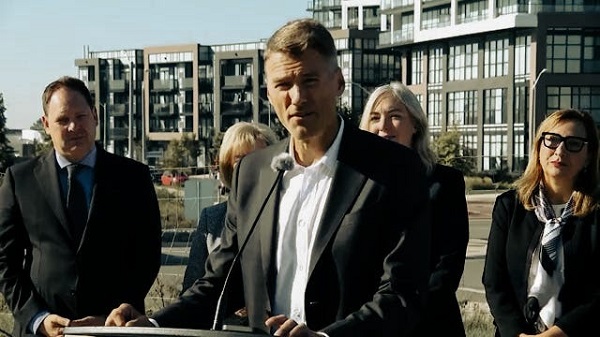
 Business2 days ago
Business2 days ago“Nation Building,” Liberal Style: We’re Fixing a Sewer, You’re Welcome, Canada
-

 Business1 day ago
Business1 day agoOver two thirds of Canadians say Ottawa should reduce size of federal bureaucracy

